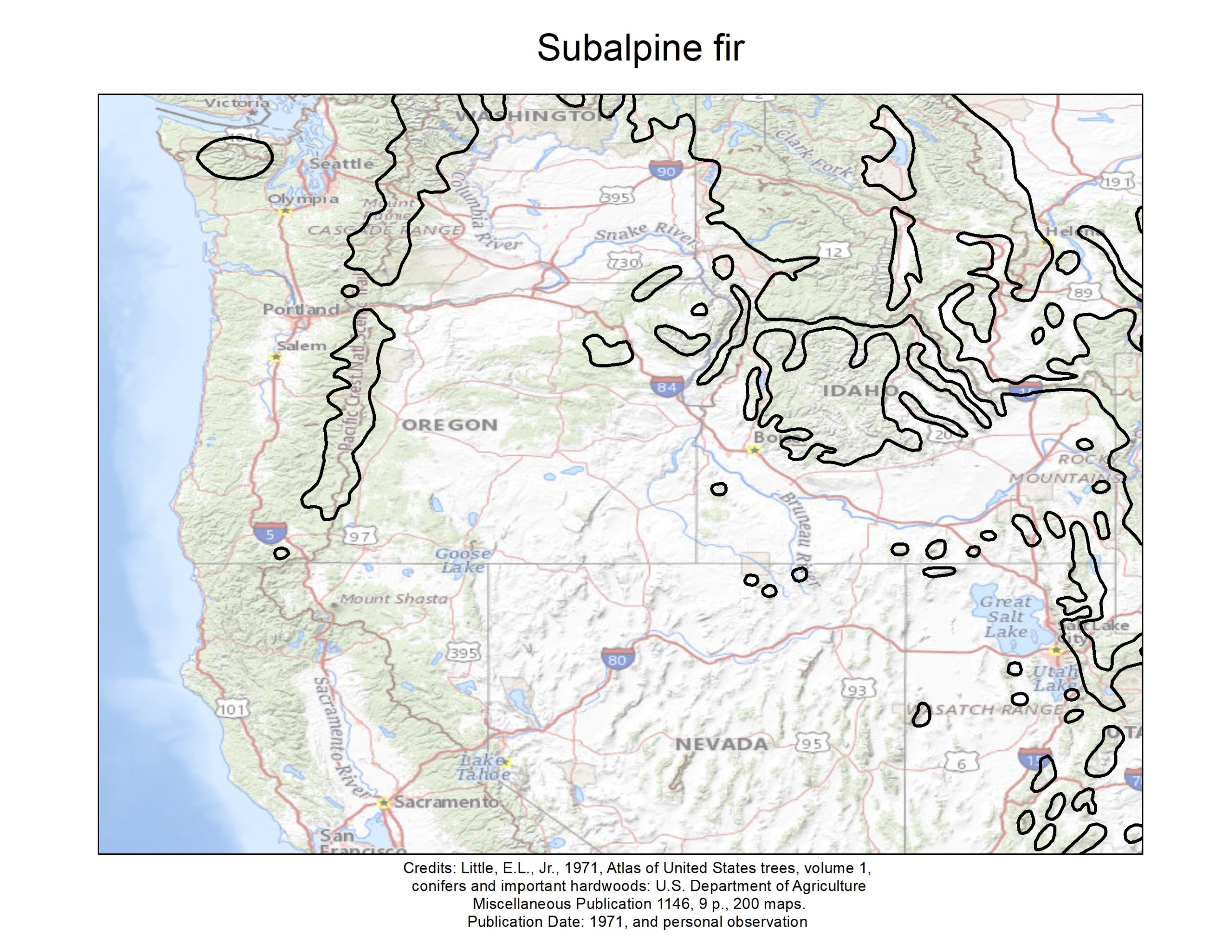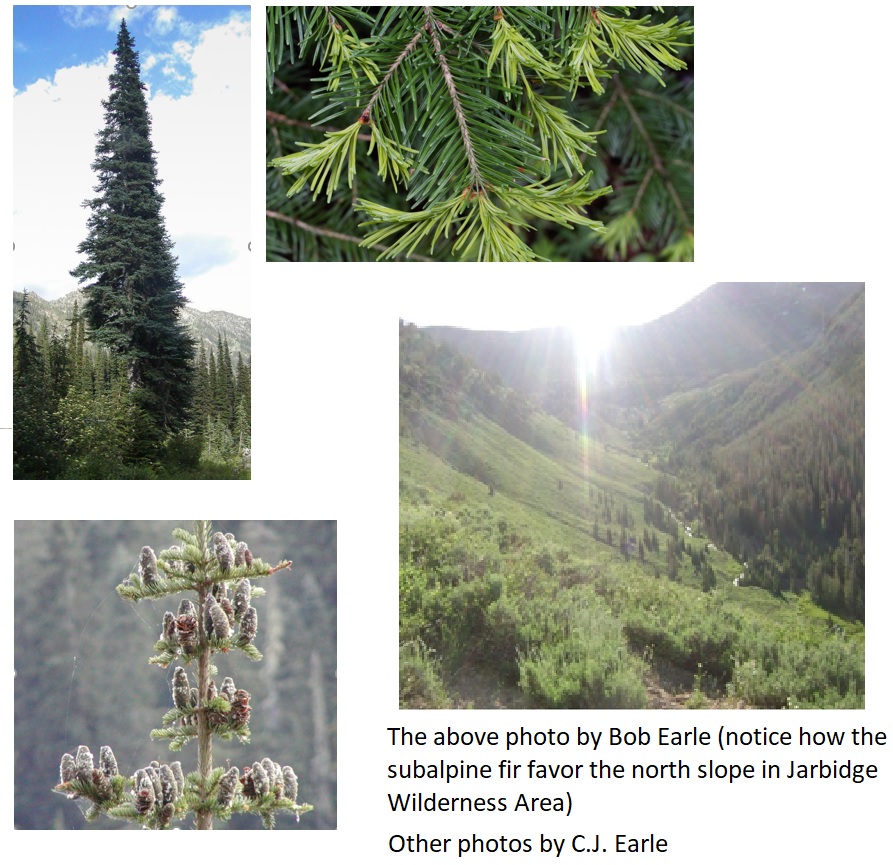Description:
The Subalpine fir grows in the high areas of the Northwest, particularly the Cascades and Rocky Mountains. There are also disjunct populations in northeast Oregon and northeast Nevada that achieve enough precipitation and elevation.
This slim, spire-like tree is easy to pick out in a forest from a distance. The taut, short, horizontal branches avoid heavy snowfall loads, which are common in its area. Its slender form might make the tree look taller than its maximum of 100 feet.
Its two to four inch purplish cones stand upright (the same as most true firs) on these short branches.
Personal Observations:
My familiarity with the subalpine fir is admittedly very light, something I hope to alleviate soon. My experience with this conifer was in a place where you wouldn’t expect to see the stately tree in such grandeur – the middle of the Great Basin in dry northeast Nevada. I was in the Jarbidge Wilderness Area, which picks up more moisture than most of the state because of its relative nearness to storms coming up from the Gulf of Mexico, and partly because of its altitude. There is more of a year-round pattern of precipitation here than the west coast as well.
I saw large groves of them, mostly on the north slopes (at 8000 to 9000 feet elevation), that tend to retain moisture better than the sun-drenched southern slopes. They were joined by very Nevada-friendly whitebark and limber pine in some spots. And the ubiquitous quaking aspen, nearby Utah’s state tree, clung to every moist slope or valley.
When I visited Jarbidge it had benefitted from a very wet year. There was still a lot of snow on the ground in this July backpack trip. The sunflowers here were waist high and very thick. I was very lucky to hike through them.
I also observed a small population of them in the Ochoco mountains of Oregon.



